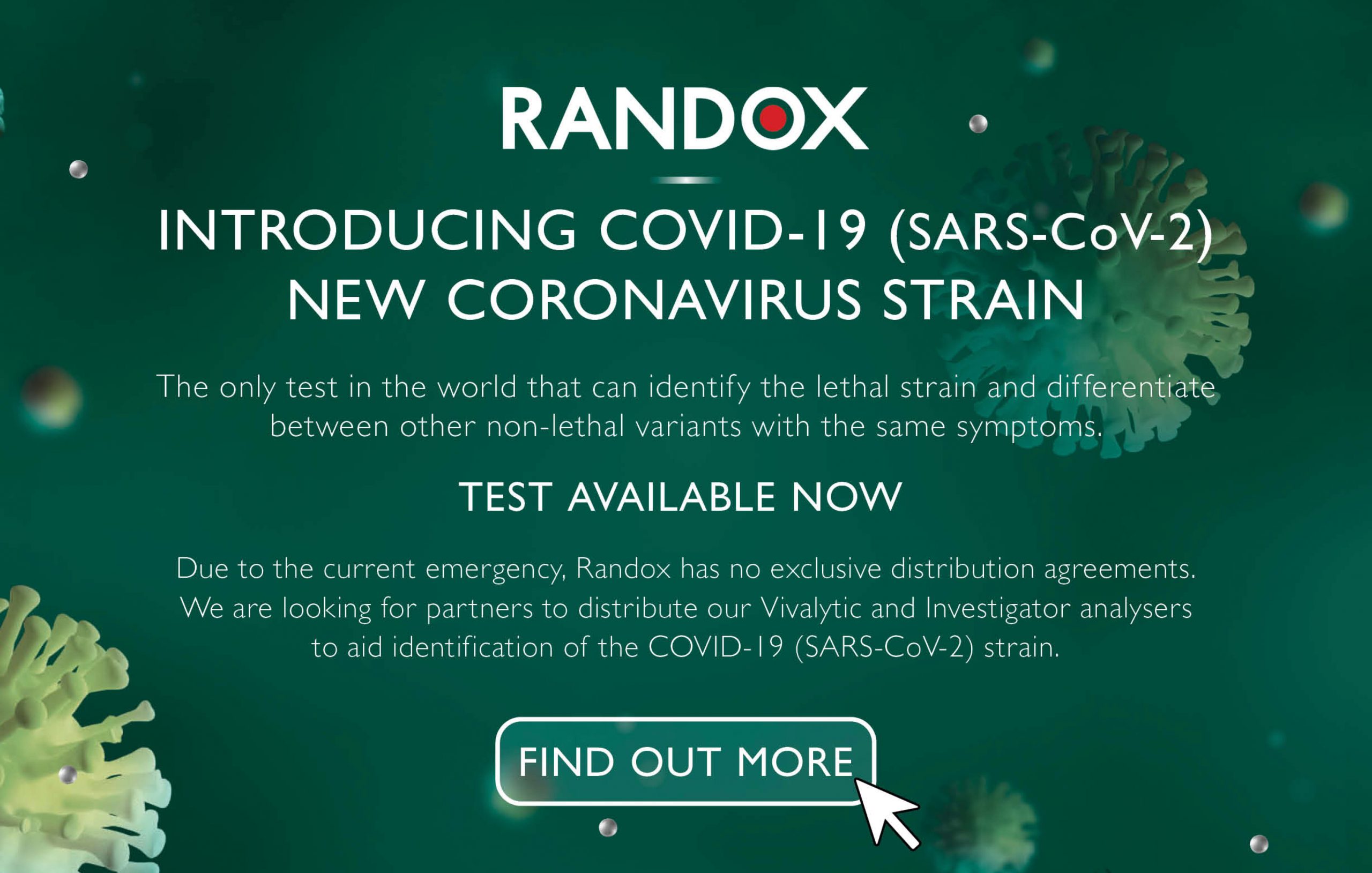Improving stroke diagnoses with Randox Biosciences
Improving stroke diagnoses with Randox Biosciences
A stroke can happen to anyone at any time. It is a serious life-threatening medical condition which occurs when the blood supply to part of the brain is cut off. It causes the brain cells to die resulting the abilities controlled by the brain such as memory and muscle control to become damaged. 1
According to the Stroke Association, strokes are considered the fourth biggest killer in the UK. There are more than 100,000 strokes each year which equals around one stroke every five minutes.2 Some people recover from the condition; however, two thirds of the survivors will have some sort of disability. 3
There are two mains types of strokes which are defined as “Ischemic strokes” and “Hemorrhagic stroke”.
Ischemic Stroke
Ischemic stroke is by far the most common kind of stroke, accounting for about 88% of all cases4. Ischemic strokes occur when there is an artery blockage which cuts off the blood supply to certain areas of the brain, which then results in brain cells being unable to make energy and dying. The arteries are vital for the brain as they bring fresh blood from the heart and lungs carrying oxygen and nutrients and taking away carbon dioxide and cellular waste. 4
Hemorrhagic Stroke
The hemorrhagic stroke is less common but is more severe as there is a higher risk of dying within the first three months. It is when a blood vessel ruptures causing a bleed inside the brain, resulting in the death of brain cells. They are responsible for 40% of all stroke deaths.5
Symptoms of Stroke
The most commons symptoms of a stroke are:
- Weakness or numbness of the face, arm, or leg on one side of the body
- Loss of vision or dimming in one or both eyes
- Loss of speech, difficulty talking, or understanding what others are saying
- Sudden, severe headache with no known cause
- Loss of balance or unstable walking, usually combined with another symptom
Many risk factors can increase your chance of having a stroke. Some life style factors include being obese/overweight, not exercising enough, heavy drinking, use of illegal drug such as cocaine, cigarette smoking, high cholesterol, diabetes, disruptive sleeping pattern and family history of having stroke or heart attack.
Preventing Stroke
Up to 80% of strokes are preventable. 3 There are simple healthy lifestyle recommendations that could decrease your chances of developing a stroke in the future which include:
- Controlling your blood pressures as it is one of the biggest preventions of developing a stroke.
- Maintaining a healthy weight through a well-balanced diet involving rich fruit and vegetables as well as decreasing the amount of cholesterol, saturated fat and sodium intake.
- Exercising regularly and staying within a good routine will also reduce your risk of having a stroke.
- Quitting tobacco usage and decreasing alohcal intake will help as well as regular usage increases the risk of having high blood pressure.
- Avoid taking illegal drugs such as cocaine as it reduces your blood flow which narrows the arteries.
Randox Biosciences offers a stroke array which works quickly to determine which type of stroke a person has experienced. Ischaemic stroke can be treated by thrombolysis and, with early usage, it can help limit stroke damage and disability.
However, inappropriate administration of thrombolytic therapy can cause serious adverse effects, including intracranial haemorrhage. Hence, there is an unmet clinical need for a rapid and highly sensitive testing that complements existing CT scanning approaches and facilitate the definitive identification of ischaemic stroke patients.
Randox’s innovative Biochip Array Technology enables simultaneous detection of eight stroke biomarkers from a single blood sample.
The eight biomarkers that can be detected in a single blood sample are:
- Glutathione S-Transferase-Pi (GSTP-Pi)
- Nucleoside Diphosphate Kinase A (NDKA)
- Parkinson Protein 7 (PARK7)
- Glial Fibrillary Acidic Protein (GFAP)
- D-Dimer
- Interleukin 6 (IL-6)
- sNFR1
- Heart Fatty Acid Binding Protein (H-FABP)
For more information email us at info@randoxbiosciences.com or visit our newly improved website: https://goo.gl/8qkYkg
- https://www.nhs.uk/conditions/stroke/
- https://www.stroke.org.uk/system/files/sotn_2018.pdf
- https://www.stroke.org/understand-stroke/what-is-stroke/stroke-facts/
- http://www.strokecenter.org/patients/about-stroke/ischemic-stroke/
- https://www.stroke.org/understand-stroke/what-is-stroke/hemorrhagic-stroke/


